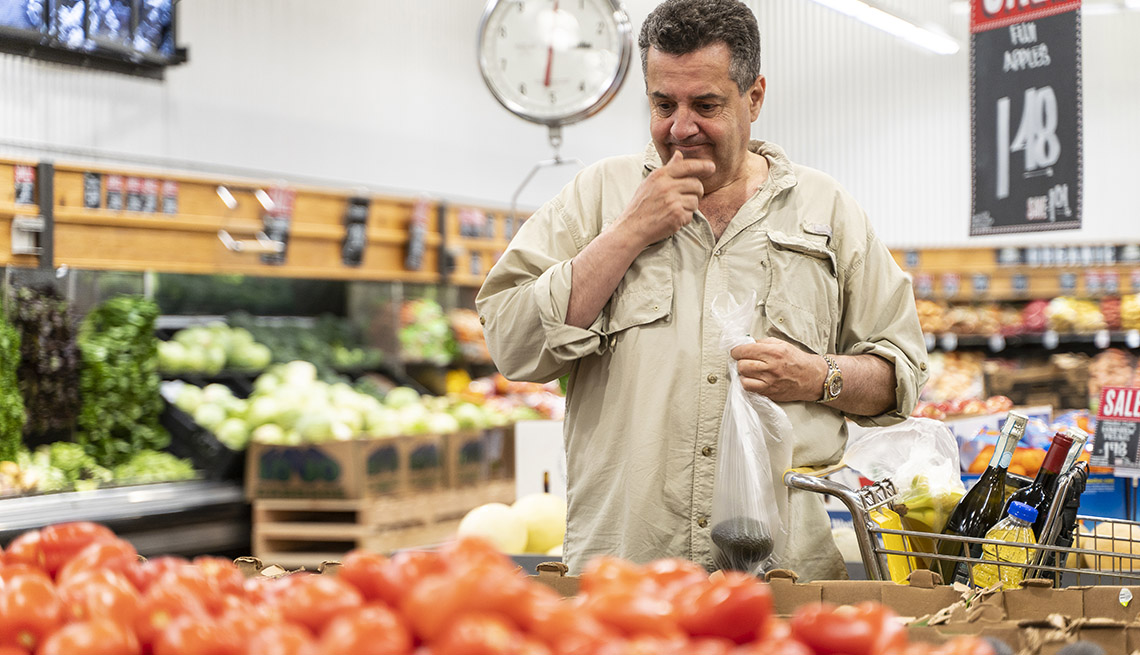Play all audios:
4. SPRAYING MIST ON VEGETABLES TO MAKE THEM APPEAR FRESH HOW IT WORKS: Many chains have installed pricey automatic misting devices that spray a light mist on things like broccoli, kale, and
spinach to give them the appearance of freshness. This savvy ploy, however, can actually reduce the quality of the vegetables and even lead to potential bacterial issues from spray nozzles
that are rarely cleaned, says Lempert. “It's one of the biggest food sanity nightmares in the store,” he says. On top of that, the water often soaks into the vegetables and makes them
heavier — so you'll pay more for them, he says. HOW TO AVOID THE TRICK — BUT STILL SAVE: Do not purchase any misted produce. “Misting does nothing to help produce that's already
picked,” says Lempert. Instead, suggests Woroch, and particularly if it's not produce you plan to use immediately, it can be better to purchase frozen vegetables, because they
don't lose their nutrients as quickly. 5. SAMPLING TO ENCOURAGE PURCHASES HOW IT WORKS: Who hasn't walked by the fresh bakery section of the grocery store and seen those bite-sized
cookie samples (often individually wrapped post-COVID) that seem to be screaming your name. Don't take one. Not only is eating that sample an instant trigger to buy that cookie, but
those who sample junk food spend an average of 60 percent more on junk food (cookies, chips and candy) at the grocery store than do those who don't take samples, says Brian Wansink,
former director of the Food & Brand Lab at Cornell University. HOW TO AVOID THIS TRICK — BUT STILL SAVE: This doesn't mean you shouldn't take any samples. In fact, Wansink
encourages taking fresh fruit samples, like apples. Those who took apple samples in a Cornell study spent an average of 30 percent more on fresh produce, says Wansink. That's actually
good, because not only is fresh fruit better for you than junk food, it typically costs way less, he says. 6. EYE-POPPING PROMOTIONS PLACED IN PRINTED WEEKLY CIRCULARS HOW IT WORKS: Big
grocery chains tend to print weekly circulars with coupons for tremendous deals that either land in your mailbox or get placed inside the local newspaper midweek. It's usually best to
ignore them, warns Trae Bodge, smart shopping expert at Truetrae.com. Because these promotions are intentionally dated to expire in just a few days, they often incentivize grocery shoppers
to purchase stuff they don't want or need. HOW TO AVOID THIS TRICK — BUT STILL SAVE: Instead of clipping coupons from the circular, Bodge suggests using coupon apps that will serve up
specific coupons when you're ready to go to the store — not when the store is ready for you. (She likes the coupon apps Flipp, Dosh and Ibotta.) 7. PLACING THE REFRIGERATED DRINK CASE
AT THE VERY FRONT OF THE STORE HOW IT WORKS: Those cold single-serve drinks sure look tasty — and convenient — after spending an hour or so grocery shopping. And the case is usually placed
right near the cash register, so you can't miss it. But think hard before buying that cold drink, warns Lempert. He was recently in a New York City grocery store where the $2.99
single-serve cold soft drink was the exact same price as a six-pack of soft drinks on the beverage aisle.

